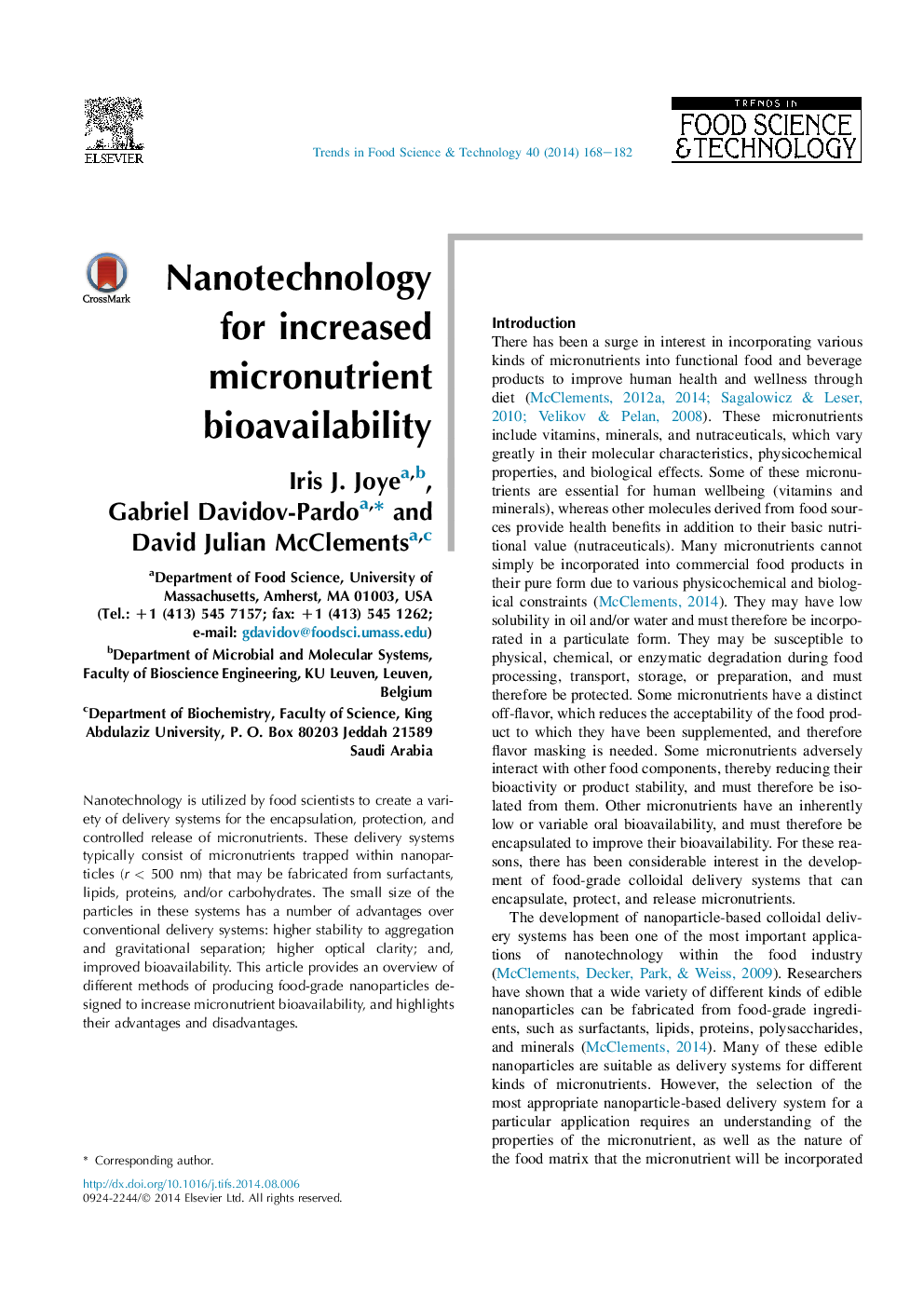| Article ID | Journal | Published Year | Pages | File Type |
|---|---|---|---|---|
| 2099798 | Trends in Food Science & Technology | 2014 | 15 Pages |
•Colloidal delivery systems for food applications are created using nanotechnology.•Edible nanoparticles are made from surfactants, lipids, protein and/or carbohydrates.•Both lipophilic and hydrophilic micronutrients are encapsulated.•Different fabrication methods are used to tailor nanoparticle properties & stability.•The behavior and functionality of nanoparticles in foods and the body are being designed.
Nanotechnology is utilized by food scientists to create a variety of delivery systems for the encapsulation, protection, and controlled release of micronutrients. These delivery systems typically consist of micronutrients trapped within nanoparticles (r < 500 nm) that may be fabricated from surfactants, lipids, proteins, and/or carbohydrates. The small size of the particles in these systems has a number of advantages over conventional delivery systems: higher stability to aggregation and gravitational separation; higher optical clarity; and, improved bioavailability. This article provides an overview of different methods of producing food-grade nanoparticles designed to increase micronutrient bioavailability, and highlights their advantages and disadvantages.
